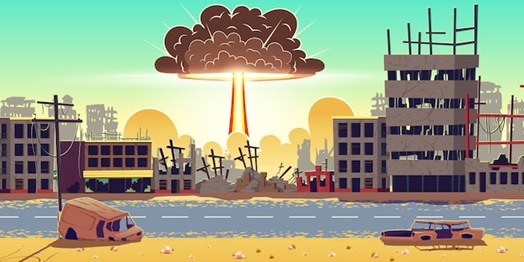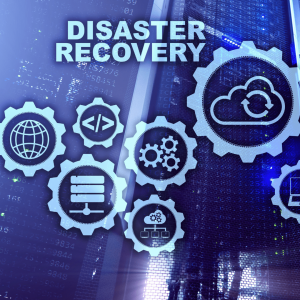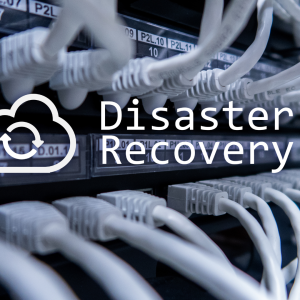Disaster recovery planning: So, is your business prepared for a disaster? Do you have a plan if things go wrong?
No business is immune to disaster.
No one wants to think about a disaster. Unfortunately, whether natural, man-made or cyber-attacks – disasters can happen at any time. Therefore, it’s vital that your business has a plan to restore interrupted or threatened business operations quickly. Having a disaster recovery plan can help mitigate the stress and worry that comes with disruption.
1. What is a Disaster Recovery Plan?
A disaster recovery plan (DRP) helps businesses take action promptly to address disruptive events to minimize damage and resume operations as quickly as possible.
2. What is IT Disaster Recovery?
With regard to IT services, a DRP aims to minimize downtime of IT infrastructure – servers, applications, and user workstations and bring critical systems back online in the shortest time possible. Disaster recovery is a vital risk mitigation measure to overcome disasters and restore the business to normal operations.
IT disaster recovery is the practice of regaining access and functionality to your IT infrastructure after disruptive events.
3. What is Disaster Recovery Planning?
Disaster recovery planning is the practice of anticipating major disruptive scenarios and preparing for how to recover quickly from such incidences.
In disaster recovery planning, a “disaster” can be any event that disrupts IT workflows and interrupts access to data, apps or systems. This could be a power outage, cyberattack, natural disaster, hardware failure, and so on. Such disruptions may lead to loss of revenue or damage to the company’s brand. The longer it takes to recover, the greater the impact. The disruptions can lead to organizational challenges, including a loss of revenue, damage to the company’s brand or a shift in the operational structure. This is why a DRP is important – to help the business recover quickly.
4. Components and Features of a DRP
A good disaster recovery plan should typically include:
- A disaster recovery team, their individual responsibilities in the team, their contact information and communication procedures (e.g., who should be notified in the event of a disaster and by whom). Remember that each team member must have an assistant who can step in, in case they are unavailable during a disaster.
- Potential disruptive scenarios and how to respond to them.
- IT inventory: a list of all IT infrastructure, their use in the business and whether they’re considered critical or non-critical for business operations.
- Critical IT assets and their maximum allowed outage time (RTO) and maximum allowed data loss (RPO).
- Data backup and recovery procedures: Which data/systems are backed up, where they are backed up to and instructions on how to recover such data/systems.
- DR locations: Specifics of the location of onsite or offsite disaster recovery locations.
- Disaster recovery procedures for staff to follow to restore lost systems or data following a disaster.
- Tools or technologies to be used for recovery of operations.
- DRP testing: a plan of frequent testing to ensure that you can achieve expected RTOs and RPOs.
A good DRP should be easy to understand and readily accessible at all times.
5. Importance of a Disaster Recovery Plan
- Minimized disruption to business operations – in the event of an unexpected disaster, your business can continue operating with minimal disruption.
- Minimized damage/ loss – a disaster will inevitably cause damage; however, you can control the extent of damage caused. For instance, in hurricane-prone areas, businesses plan to move all sensitive equipment off the floor and into a room with no windows.
- Staff training and preparation – your staff are trained on how to respond in case of a disaster. This preparation will reduce stress levels and give your team a clear plan of action.
- Quick restoration of services – having a solid DRP increases your chances of restoring your critical operations to their normal state in a very short window of time. Your Recovery Time Objective (RTO) will stipulate the longest time you are willing to wait until services are restored.
6. Kaluari Disaster Recovery as a Service (DRaaS)
Kaluari DRaaS ensures you have complete confidence in your business continuity plan as you implement your DR strategy.
We offer full system and application failover from your site to our cloud. We actively test our DR solution every month. In this way, you can be assured it’s ready when or if you need it.
7. Reliable Disaster Recovery Service
Systems outages and system downtime are highly preventable if your business continuity plans include the right solutions. Protect and secure your business infrastructures, systems, networks, applications and data with Kaluari disaster recovery as a service (DRaaS).
8. What Kaluari DRaaS offers
- Secure full system and application replication
- System failover and failback ability for single or multiple systems
- Cloud mobility (public/private)
- Resilient connectivity
- Reports on the success (or otherwise) of replication
Regular testing
Our DR service includes automated tests run regularly (typically, monthly) to ascertain that your business systems are fully available at the failover location. We start up each virtual machine and then run a set of checks to ensure that the machine is healthy. We send a full copy of the disaster recovery testing report to you as evidence of the actual recovery time and health of all the servers.
Get in touch with us today to discuss your specific business needs and resource requirements.





Pingback: Cyber Resilience Key Components Every Business Should Try » Kaluari Blog